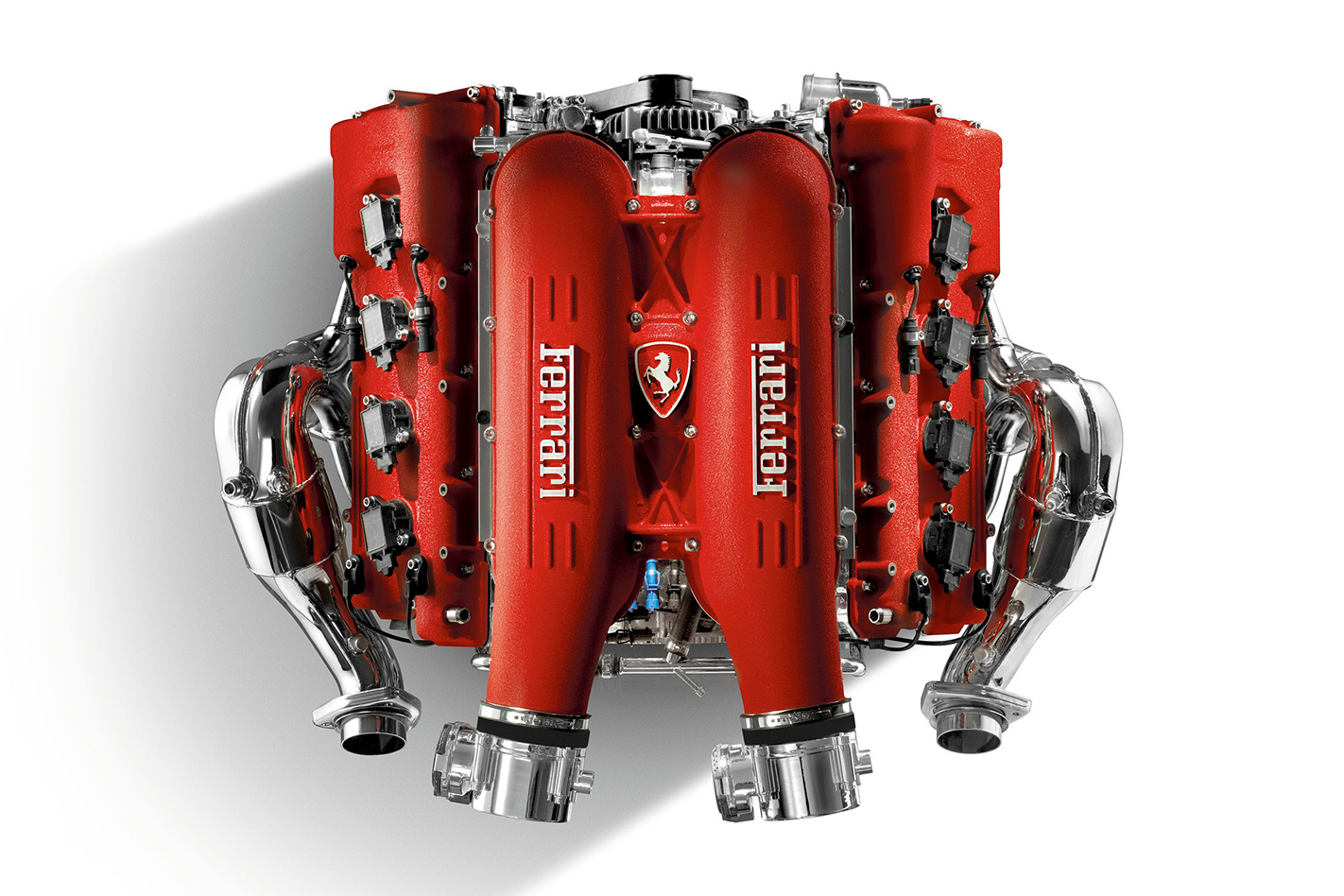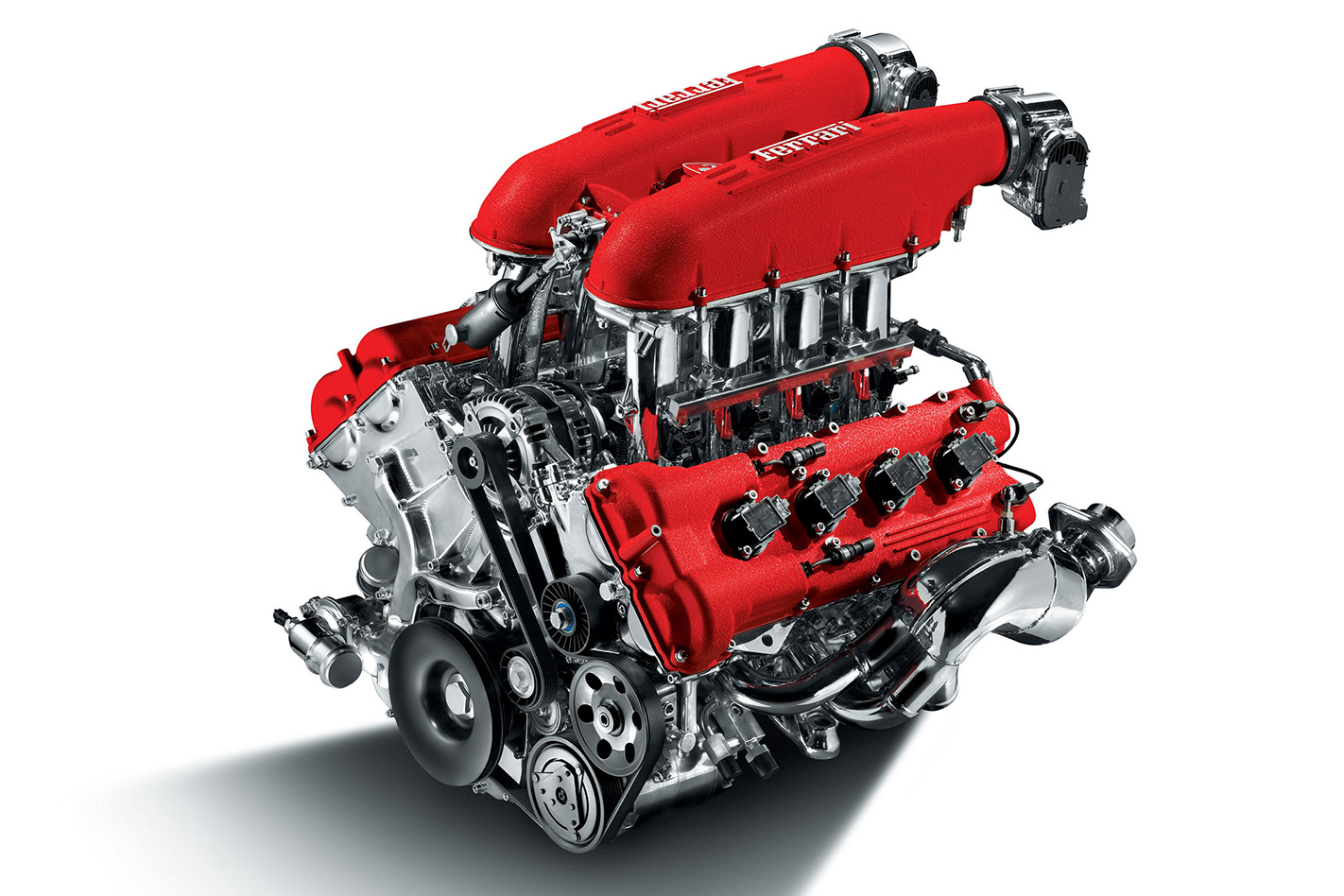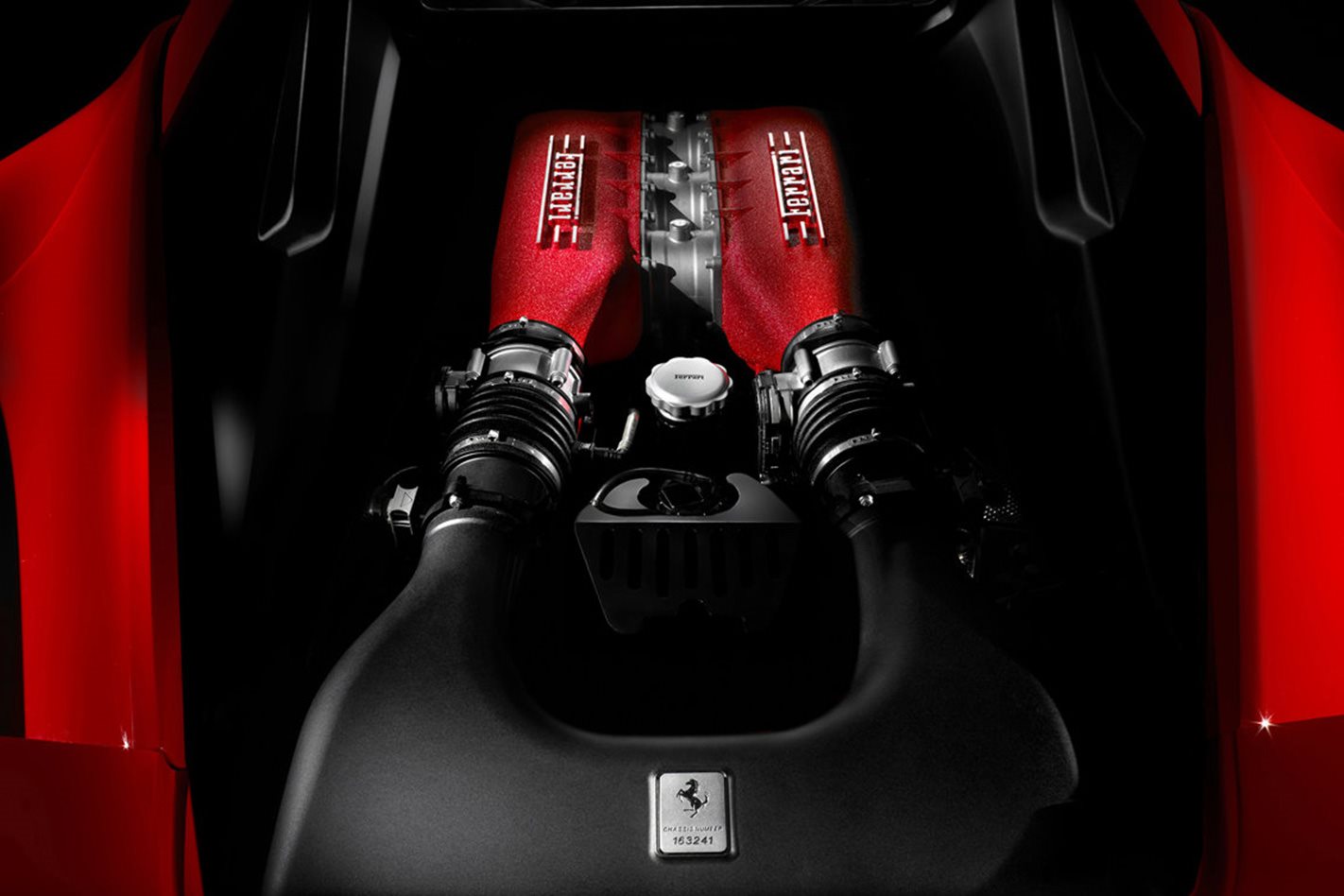If this is the last naturally aspirated Ferrari V8, the F136 found in the 458 Speciale and Aperta is one hell of an Italian send off. For many fans of atmo bent-eight engines, Prancing Horse tifosi included, the 4.5-litre unit is the pinnacle of high-rpm thrills. It’s a soundtrack that sends chills down spines.
The F136 is often referred to as the Ferrari-Maserati engine, which makes the fact it didn’t actually debut in a Ferrari less of a shock. That honour went to the Maserati Coupe and Spyder in 2001. Then it was a 4.2-litre engine, but through its lifespan, the F136 has ranged from 4.2 to 4.7 litres and from 287kW to 445kW. It’s not only shared between Ferrari and Maserati; it also found its way into the Alfa Romeo 8C. Maserati and Alfa use cross-plane crankshafts, while Ferrari versions are flat plane.

However, its crowning moment is in the back of the 458 Speciale and Aperta. Here, the 4497cc dohc V8 produces 445kW at a screaming 9000rpm and a purposeful 540Nm at 6000rpm. The Speciale claims a 0-100km/h time of 3.0sec, before going on to a top speed of 325km/h. Noteworthy is the fact that the Speciale’s specific output of almost 100kW per litre ranks it as the most powerful atmo engine to be put into series production. Impressive given the talent Maranello has with naturally aspirated V12s.
How did Ferrari do it? Utilising the company’s F1 technology is paramount, so much so that the F136 was made in the same factory, using the same machinery and processes used for the F1 team. Revised pistons and conrods, aggressive camshafts, optimised crank geometry and a new carbon fibre manifold went most of the way to accounting for the 26kW increase over the GTB, as did the higher compression ratio of 14.0:1. The F136 family created a habit of awards at the International Engine of the Year competition, claiming eight gongs.
Adding to the rev-happy, free-spinning nature of the 32-valve V8 is an addictive cathedral of sound. The position of the exhaust tips helps amplify the screaming acoustics, but either from inside or outside the cabin, the sound emitted is intoxicating. Free of muffling turbos, it’s the kind of automotive theatre that needs to be cherished. With a lithe dry weight of 1290kg and a rapid-fire seven-speed dual-clutch gearbox, it’s a proper race car for the road.

However, the F136 also found its way into myriad racing cars, notably GT3-based iterations. The Ferrari F430 Challenge and F430 GT3 use a 4.3-litre version, with the capacity increasing to 4.5-litres for the 458 Italia GT2 and GT3 cars. Interestingly, the Ferrari F430 GTC, used between 2006 to 2010, downsized displacement to 3.9-litres. Power levels range from 327kW to 405kW.
Ferrari supported the now defunct A1 Grand Prix (A1GP) for its final two seasons in 2008 and 2009 as the official engine supplier. Often promoted as the “World Cup of Motorsport” with teams formed around nations, the series used a carbon fibre monocoque and an aluminium honeycomb core chassis. The latter’s origins could actually be traced back to the Ferrari F2004 Formula 1 racer. The engine is a 4.5-litre version of the F136, with power levels capable of reaching 450kW.
The power unit weighs 160kg, which is 40kg more than the Zytek engine it replaced, but also offered 550Nm of torque and propelled the A1GP car to a top speed of 320km/h. Placed in a circa 700kg single-seater, they’re quick. The category also introduced a ‘PowerBoost’ mode, which delivered drivers an added 50kW (to make 450kW) in short burst to aid overtaking. It could be used at will in qualifying, four times in a Sprint race, and eight times in a Feature race.
For many, the twin-turbo 3.9-litre found in the likes of the 488 GTB and Pista is to be admired rather than adored. However you package it, the aural delights just aren’t the same and the heartstrings simply don’t pull as hard with the move to forced induction. In an idyllic kind of way, given Maserati first used the engine, the GranTurismo and GranCabrio are set to bookend the F136’s lifespan. It’ll be a sad goodbye.
| Manufacturer | Ferrari-Maseratiu00a0 |
| Production | 2001 to date (2022 expected) |
| Configuration | 90u00b0 V8 |
| Bore x Stroke | 94.0 x 81.0mm |
| Displacement | 4497cc |
| Valvetrain | DOHC four valves per cylinder |
| Power | 445kW (Speciale) |
| Torque | 540Nm (Speciale) |
Click here to read more Wheels features on Great V8s.






